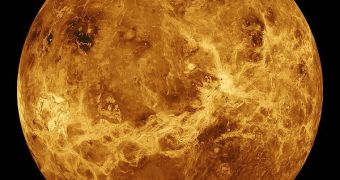Scientists with the American space agency believe they may have uncovered direct evidence that one of our neighboring planets, more precisely Venus, is still geologically active. Evidence to the contrary have been the norm for many years, so these conclusions are bound to stir up some controversy.
No space expert had any doubt that the planet was active at one point in its history. But most of the international astronomical community believed that this happened billions of years ago.
They also thought that no clear signs of tectonic activities or volcanic eruptions could be detected on the surface of the planet. But the last few Venusian missions began sending back data that constantly eroded this view.
The probes began sending back what looked like evidence of the fact that Venus was still geologically active. But those datasets were disregarded for a variety of reasons. Now, scientists with NASA say they have definite proof that tectonic events still go on on the planet.
“The geological history of Venus has long been a mystery. Previous spacecraft gave us hints of volcanic activity, but we didn't know how long ago that occurred,” explains expert Sue Smrekar.
“Now we have strong evidence right at the surface for recent eruptions,” adds the investigator, who holds an appointment with the NASA Jet Propulsion Laboratory (JPL), in Pasadena, California.
According to the new data she and her team gathered, Venus exhibits signs of tectonic activity on its surface that are not older than 3 million years. This is a very short time span in astronomical terms.
Most of the data used to support this view come from the Venus Express mission, which is managed by the European Space Agency (ESA). The information were combined with topographic data obtained by the NASA Magellan spacecraft.
Determining what happened at Venus is very important for understanding Earth's early history as well. Our planet developed about 4.5 billion years ago, and our neighbor is estimated to have about the same age.
Therefore, it can be concluded that process which shaped our world did the same on Venus. Figuring out how these processes changed over time may provide us with hints as to how Earth itself might look like in the future, Daily Galaxy reports.

 14 DAY TRIAL //
14 DAY TRIAL //